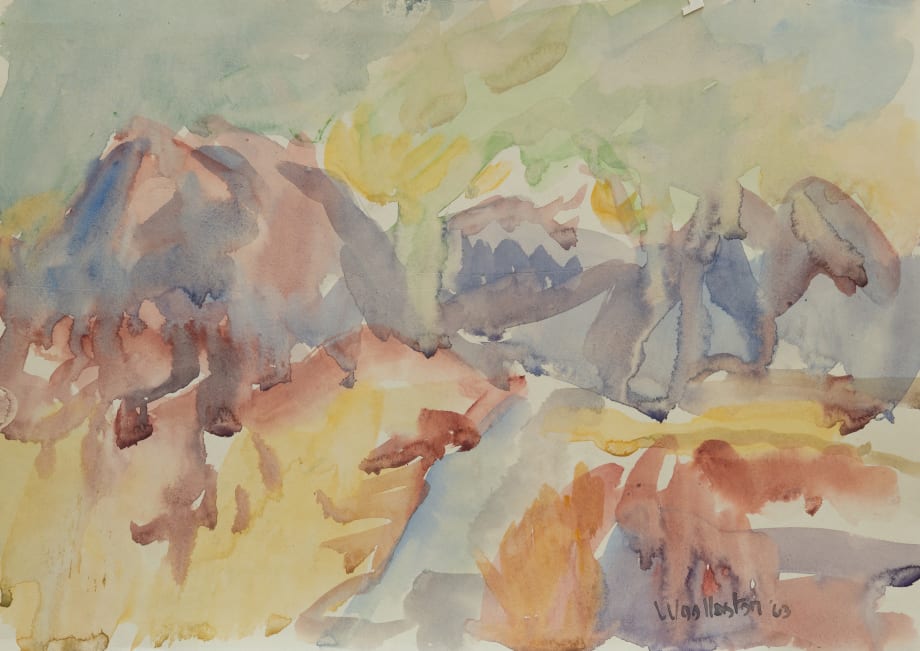My own ultimately rather restricted range of dull earth colours and reduced blues and greens arose from my own personal response to the daytime earth colours of the sun-drenched landscape of Māpua ... writers on my work are fond of quoting me as having said ... I wanted to paint the light, but only after it had been absorbed into the earth. It is true.
–Mountford Tosswill Woollaston [i]
Mountford Tosswill Woollaston (1910 – 1998) was born at Toko, a small rural settlement east of Stratford, and raised on a dairy farm near Huinga, Taranaki. Woollaston remains a key figure in the history of 20th century art in Aotearoa New Zealand. His landscape paintings – with their characteristically flat overlapping picture planes, energetic brush-strokes, and pastel and earth toned palette – position him as one of the pioneers of modernism in this country.
Inspired by the musings of English Romantic poets, Woollaston’s first creative outlet was poetry. Having left home in 1928 to go fruit-picking in Motueka, it was during this time that he discovered an interest in art, and in 1931 enrolled at Canterbury College School of Art in Christchurch. However, he quickly found the instruction too conservative and soon moved to Dunedin to study at the Dunedin School of Art. He departed after only two terms and in 1934 moved to Māpua, Nelson, where he began building a tiny house out of dried mud-bricks. In 1936 Woollaston held his first exhibition in Dunedin. Among those visitors to the gallery was a young Colin McCahon, for whom Woollaston’s paintings were a revelation. Shortly afterward the pair met, and it was to be the beginning of an enduring friendship, with McCahon often visiting Māpua during fruit-picking season, and later, McCahon settled at Pangatōtara, near Motueka. In 1950 Woollaston moved to Greymouth with his wife Edith and their children. This relocation brought with it a change not only in subject but also stylistically, with the artist embracing more of those qualities of Abstract Expressionism in response to the drama and scale of the West Coast landscape. In 1968 the family returned to Motueka, where he remained until his death.
It is often a challenge to write about historically significant artists without becoming too preoccupied with biography, weighed down by the exact recording of dates and events. When thinking about Woollaston, it is equally difficult to speak to his life and work without tracing every physical movement, taking note of each time he moved from one town or city to another. But Woollaston’s life seems so much of the land – from his early days working as an orchardist, to building his mud brick house at Māpua – and the landscapes within which he lived were so integral to his practice, and so essential to the man himself, that is seems vital to record these geographical shifts that informed the subject of his work.
Woollaston would repeatedly return to paint a particular view or mountain range or lake edge, sometimes over and over and over again, in a constant endeavour to more closely capture a sense of truth and an immediacy of experience. While most recognised for his landscape paintings, he was equally inspired by the human form and created many portraits, treating each subject with the same intensity in an attempt to render on paper those same sensations found in his landscapes.
[i] Toss Woollaston in Pound, F. The invention of New Zealand: art & national identity, 1930-1970 Auckland: Auckland University Press (2009), p 54.

